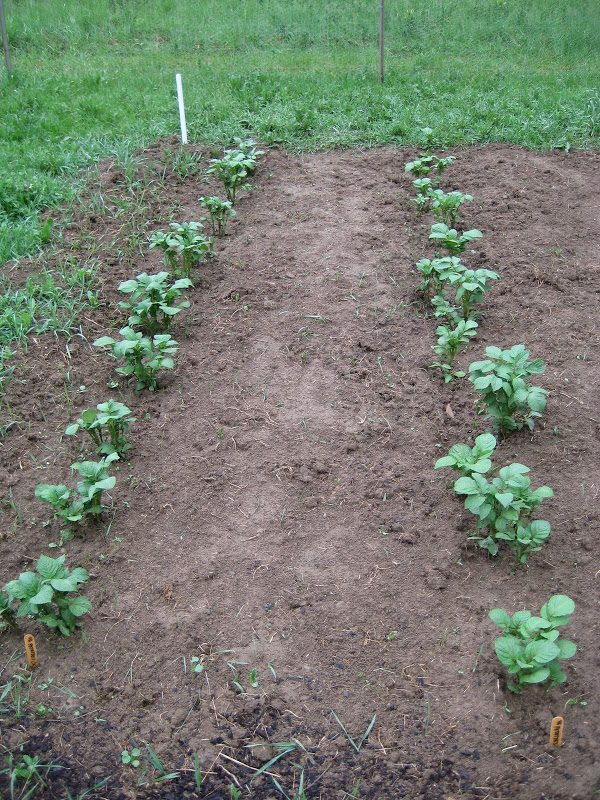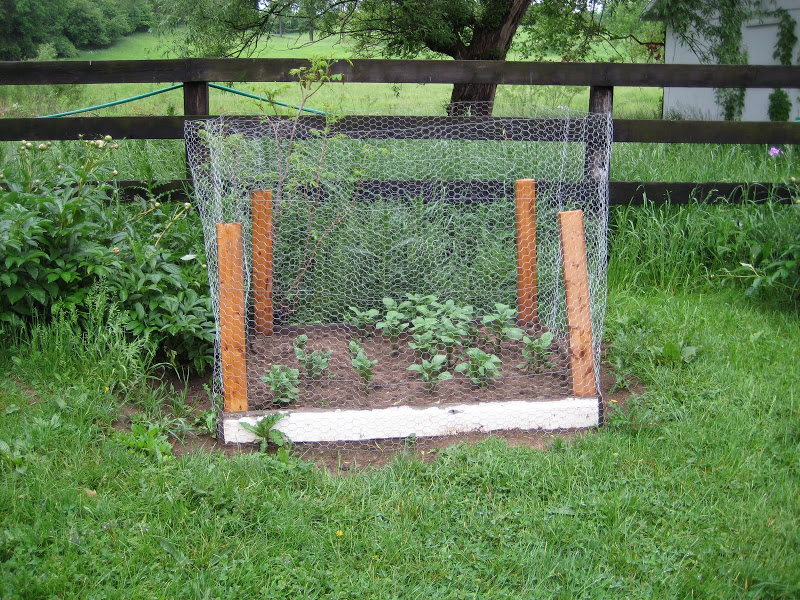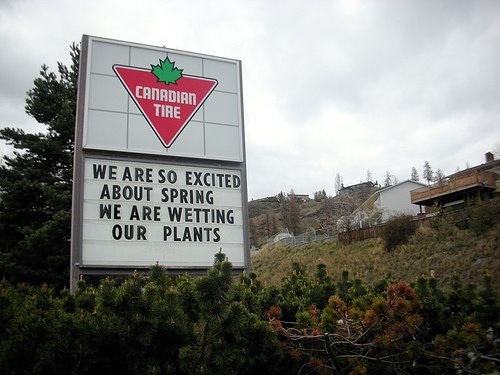The fencing around the garden has taken many shapes in our heads. Initially we wanted to put up chicken wire (or as some call it, “poultry netting,” which does seem a bit more politically correct) around the bottom of the existing fence that encloses the pasture. But then that seemed insecure so we figured we’d better fence closer to the actual garden. Luckily, and fittingly, our pole barn had just enough metal fence poles laying around for us to use.
We went back and forth on what kind of fencing to choose. Apparently we’re vain because from the get-to we knew we didn’t want to use plastic fencing because it would have looked ugly. There was no other reasoning than that.
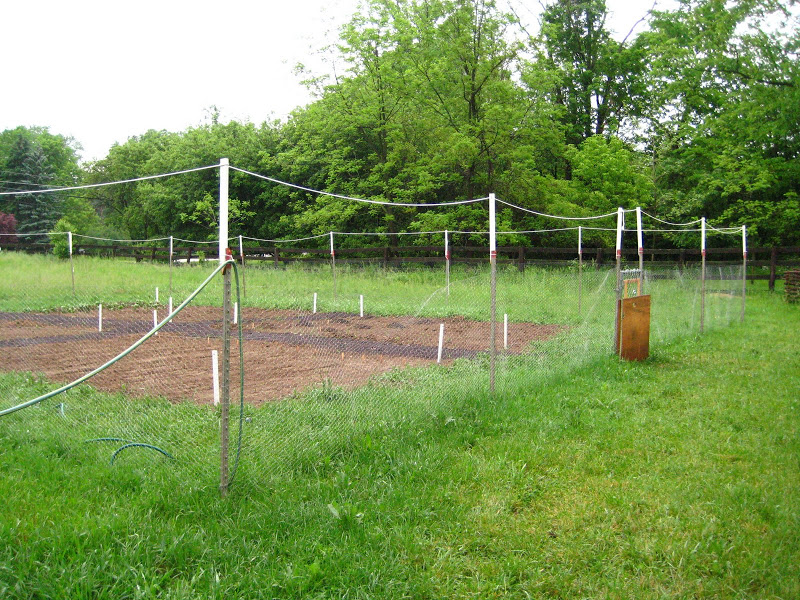
Ultimately we ended up getting 200′ of 48″ tall chicken wire. Then we put a call out for old wire hangers and managed to gather more than we’d ever like to see again. (Handling hundreds of wire hangers is the most frustrating puzzle of snags and tangles ever.) We cut the two curved ends off of them and used those to “tack” down the bottom of the fence to keep out our little rabbit/groundhog/raccoon/skunk friends.
I also built a wooden cover that’s attached to the garden gate. It slides up and down when you come and go to cover the sizable gaps between the gate and fence that the critters could have squeezed through. So with those little nuisances taken care of we turned our attention to those cute, damn deer.
Deer don’t like many things, but even if they don’t like it, they’ll get used to it. So if you deter them with a scent or movement or noise, it will initially work, but they’ll get hip to it and you’ll have to change your method. The only thing that will work for good is a really tall fence. And by really tall we mean 12 feet. Think about that; it’s nuts! Next time you’re on a basketball court look up at the rim, then add two feet to that and that’s how tall the ding-dang fence would have to be. Now again, think about that! I’m 6’3″ and a deer could clear me by over four feet. Nature!
As mentioned before, we went with the 48″ tall chicken wire, so we’re planning on using different tactics throughout the summer to deter them. For example, horrible, terrible, horrible smelling spray, maybe some thoughtfully placed fishing line, wind chimes, or who knows, we may end up booby-trapping the fields. We did add stakes to the top of each pole and strung some white rope through them — which raised the total height to about 6’6″ — to hopefully make the deer think twice, or at least one and a half times.
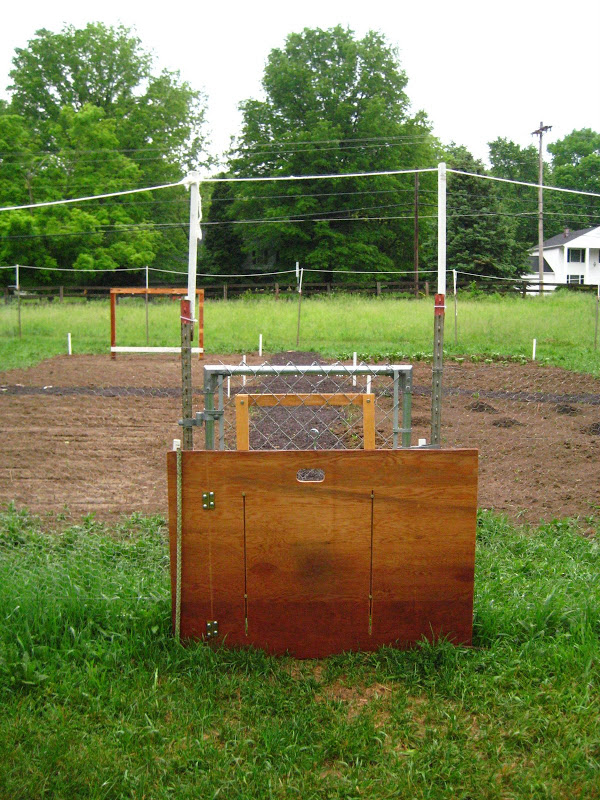
So far we’ve had no burglars, but we can feel the deer closing in. They’ve been sleeping closer and closer in the fields and I know they’re scheming. Those little devils.
–a.
The fencing around the garden has taken many shapes in our heads. Initially we wanted to put up chicken wire (or as some call it, “poultry netting,” which does seem a bit more politically correct) around the bottom of the existing fence that encloses the pasture. But then that seemed insecure so we figured we’d better fence closer to the actual garden. Luckily, and fittingly, our pole barn had just enough metal fence poles laying around for us to use.
We went back and forth on what kind of fencing to choose. Apparently we’re vain because from the get-to we knew we didn’t want to use plastic fencing because it would have looked ugly. There was no other reasoning than that.

Ultimately we ended up getting 200′ of 48″ tall chicken wire. Then we put a call out for old wire hangers and managed to gather more than we’d ever like to see again. (Handling hundreds of wire hangers is the most frustrating puzzle of snags and tangles ever.) We cut the two curved ends off of them and used those to “tack” down the bottom of the fence to keep out our little rabbit/groundhog/raccoon/skunk friends.
I also built a wooden cover that’s attached to the garden gate. It slides up and down when you come and go to cover the sizable gaps between the gate and fence that the critters could have squeezed through. So with those little nuisances taken care of we turned our attention to those cute, damn deer.
Deer don’t like many things, but even if they don’t like it, they’ll get used to it. So if you deter them with a scent or movement or noise, it will initially work, but they’ll get hip to it and you’ll have to change your method. The only thing that will work for good is a really tall fence. And by really tall we mean 12 feet. Think about that; it’s nuts! Next time you’re on a basketball court look up at the rim, then add two feet to that and that’s how tall the ding-dang fence would have to be. Now again, think about that! I’m 6’3″ and a deer could clear me by over four feet. Nature!
As mentioned before, we went with the 48″ tall chicken wire, so we’re planning on using different tactics throughout the summer to deter them. For example, horrible, terrible, horrible smelling spray, maybe some thoughtfully placed fishing line, wind chimes, or who knows, we may end up booby-trapping the fields. We did add stakes to the top of each pole and strung some white rope through them — which raised the total height to about 6’6″ — to hopefully make the deer think twice, or at least one and a half times.

So far we’ve had no burglars, but we can feel the deer closing in. They’ve been sleeping closer and closer in the fields and I know they’re scheming. Those little devils.
–a.
I was thinking that this post would be an update, but I was looking back at the archives and realized that I have never posted about our workshop in the barn. The farmhouse that we live in, like most farmhouses, has a barn. Andrew remembers when he was young and horses were in the field and in the barn. They were taken care of by a woman named Marge. The horses and Marge are gone and the barn is pretty much empty except for some hay the Towne’s use for the alpacas and a ton of wood scraps.
When we first moved in almost all the stalls still had old hay in them from when the horses were around. We had to wear masks while cleaning it out because it was an allergy nightmare.
Basically, this is what it looked like before and while we were cleaning it out:

And this is what it looks like now:
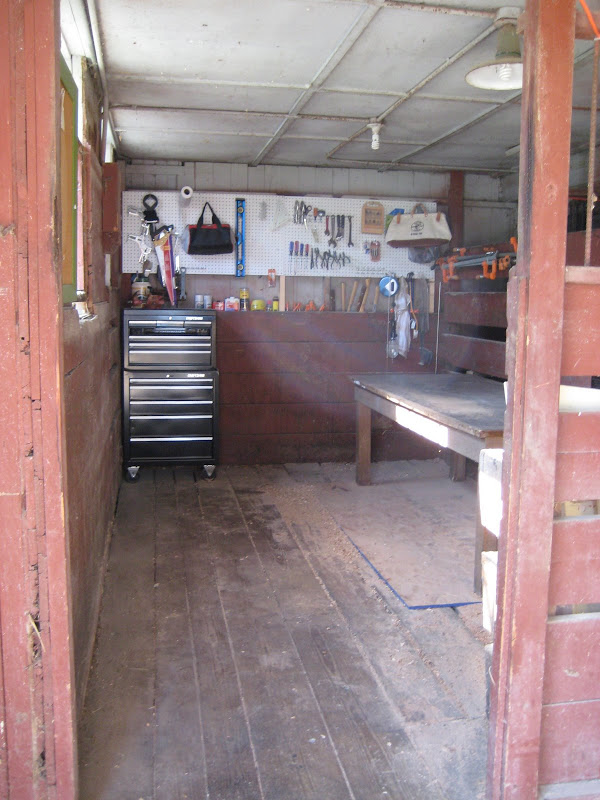
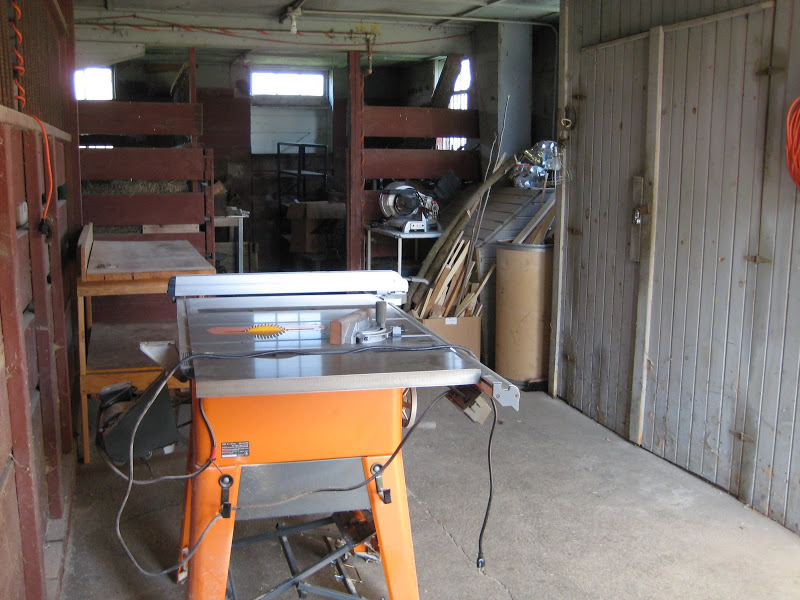
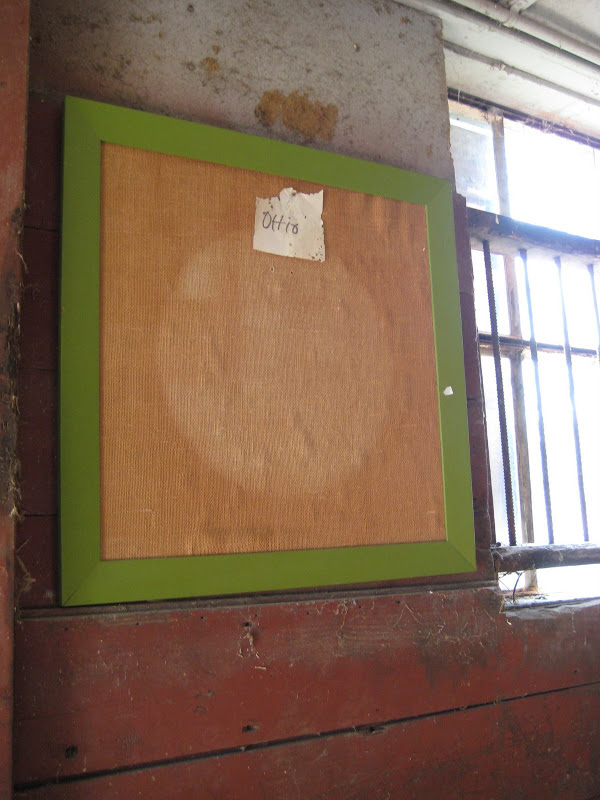
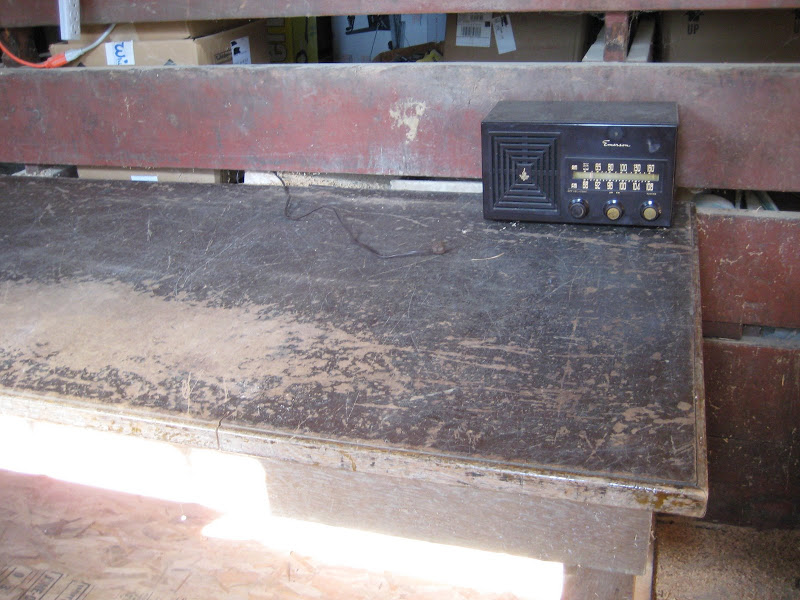

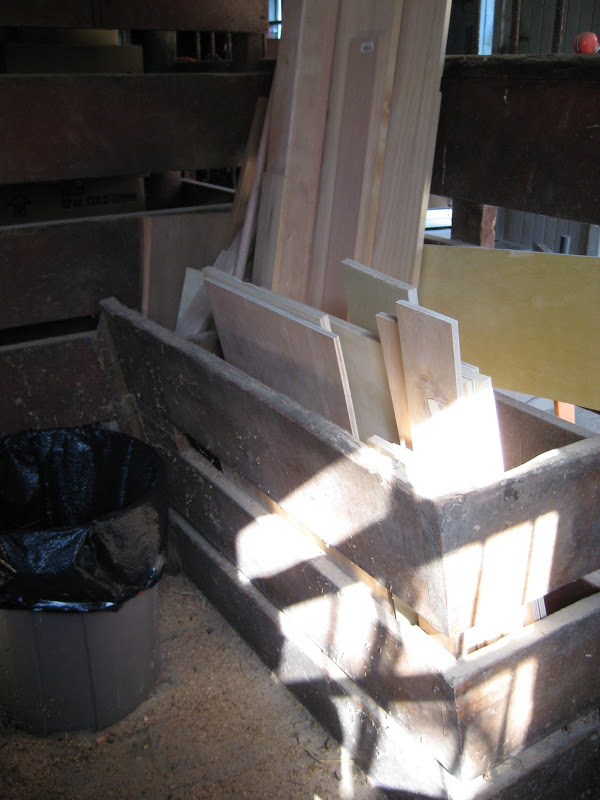
Thanks to my brother TJ for all his help getting the barn into shape. In the past year the workshop has produced a dining room table, a bed frame/desk, a toy chest, a stool, a compost bin, a trellis, a kid’s desk, Hungarian shelves, and a storage box for pool supplies (I’m sure I’m forgetting somethings)!
–c.
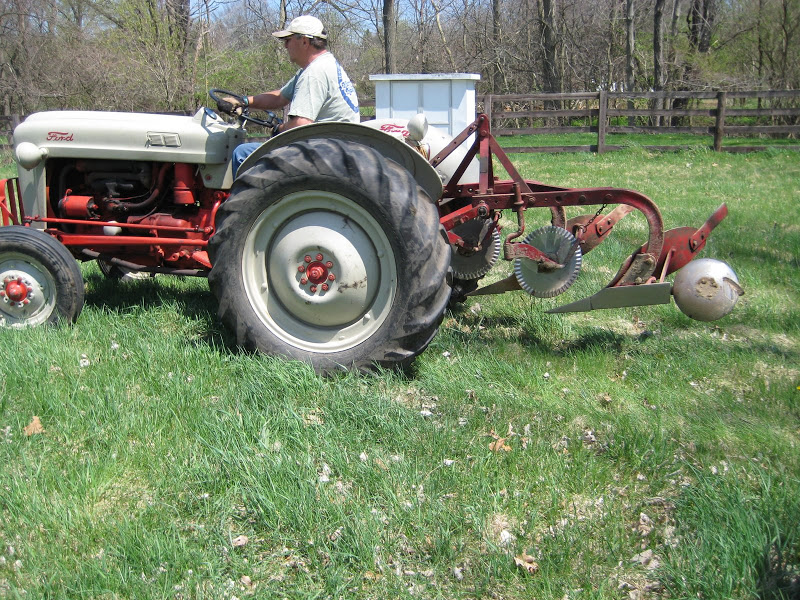
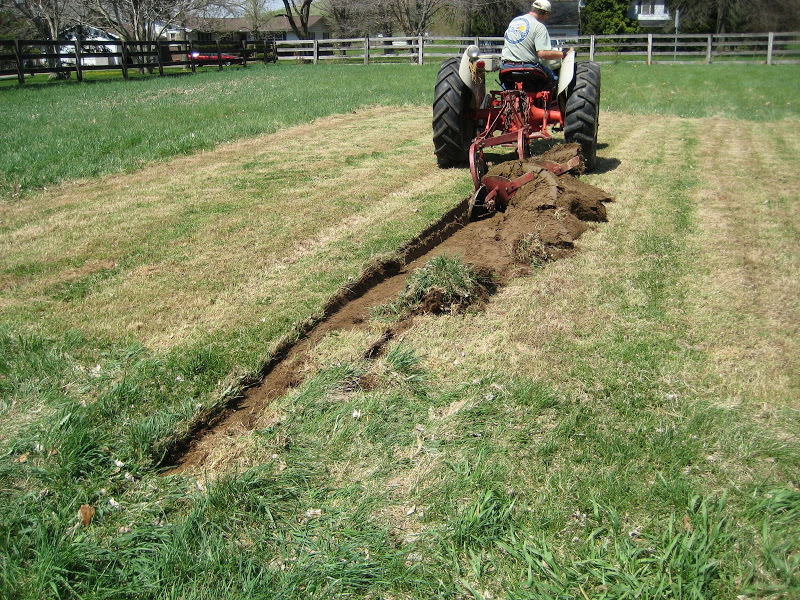
We had to wait until the ground was sufficiently thawed and dried out a bit before we could plow. There is an old time farmer named Mr. Chandler down the road from us who was kind enough to lend us his plow. Last year, Andrew and Andrew’s dad and brother helped Mr. Chandler and his son put their barn door back up that had come off it’s track. Andrew said it felt really nice, like he imagined it was in the old days, neighbors weren’t strangers and everyone helped one another out. Afterwards, Mr. Chandler’s daughter-in-law baked us pies as a thank you!
Andrew’s dad drove the plow because he is familiar with them. It’s crazy how powerful machinery is! The type of plowing we did is called moldboard plowing which is a pretty intense way to turn up the soil and clear the land. Usually for gardens as small as ours this is a one-time, never-need-to-do-again plowing process. It’s hard on the land and over time, if it is done repeatedly, can actually ruin the soil. Next year we will just till and we should be fine.
The plow took about 10-15 minutes to clear a 30′ X 40′ space! That was the easy part. We then had to rototill the whole plot (it would have been ideal to disc the field at this point, but we didn’t have one of those). Oh, and the raking…ugh…talk about back breaking work.
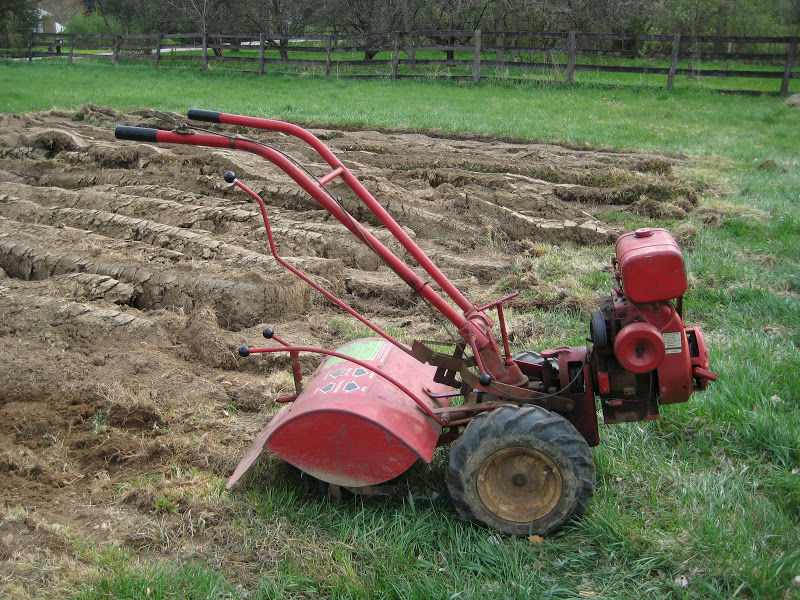
The weeding for the first year is going to be absolutely horrific, but we just need to stay on it!
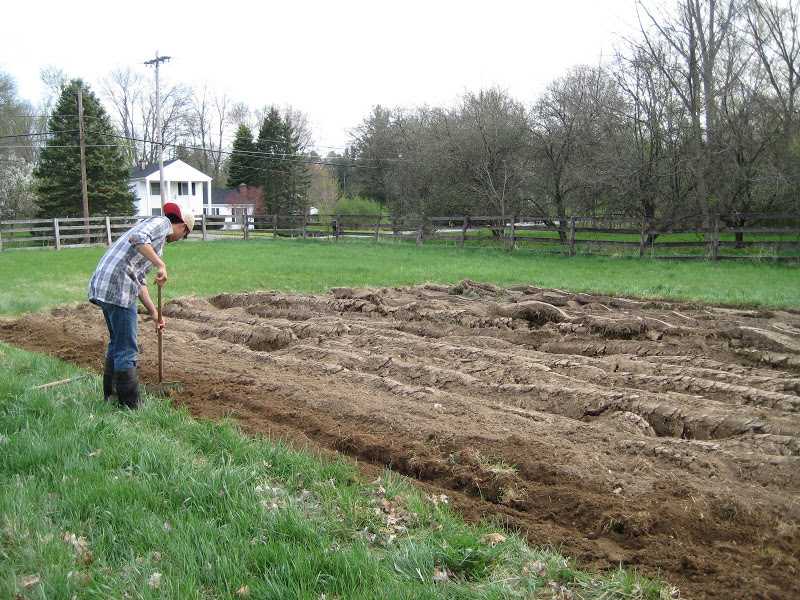
Next step: fencing.
–c.


We had to wait until the ground was sufficiently thawed and dried out a bit before we could plow. There is an old time farmer named Mr. Chandler down the road from us who was kind enough to lend us his plow. Last year, Andrew and Andrew’s dad and brother helped Mr. Chandler and his son put their barn door back up that had come off it’s track. Andrew said it felt really nice, like he imagined it was in the old days, neighbors weren’t strangers and everyone helped one another out. Afterwards, Mr. Chandler’s daughter-in-law baked us pies as a thank you!
Andrew’s dad drove the plow because he is familiar with them. It’s crazy how powerful machinery is! The type of plowing we did is called moldboard plowing which is a pretty intense way to turn up the soil and clear the land. Usually for gardens as small as ours this is a one-time, never-need-to-do-again plowing process. It’s hard on the land and over time, if it is done repeatedly, can actually ruin the soil. Next year we will just till and we should be fine.
The plow took about 10-15 minutes to clear a 30′ X 40′ space! That was the easy part. We then had to rototill the whole plot (it would have been ideal to disc the field at this point, but we didn’t have one of those). Oh, and the raking…ugh…talk about back breaking work.

The weeding for the first year is going to be absolutely horrific, but we just need to stay on it!

Next step: fencing.
–c.
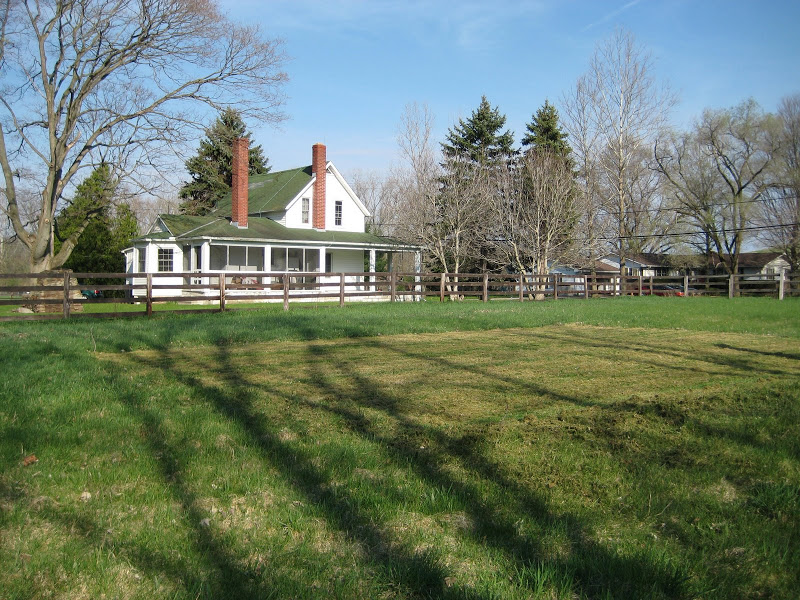
So far, the most labor intensive process of the garden has been preparing the garden plot. Between mowing, plowing, tilling, raking and weeding, the majority of our time and energy thus far has been spent getting the ground ready for planting.
We’re fortunate to have a big fenced in pasture right next to our house that has been nothing but grass since the dinosaurs, as Andrew likes to say. Originally it was a field for horses, but there hasn’t been any there for nearly 20 years. It gets full sun all day (except for one area that gets shade towards the end of the day from a huge tree in our backyard) and seems the perfect spot for the garden.
We started the plot by measuring out the plot then mowing it.
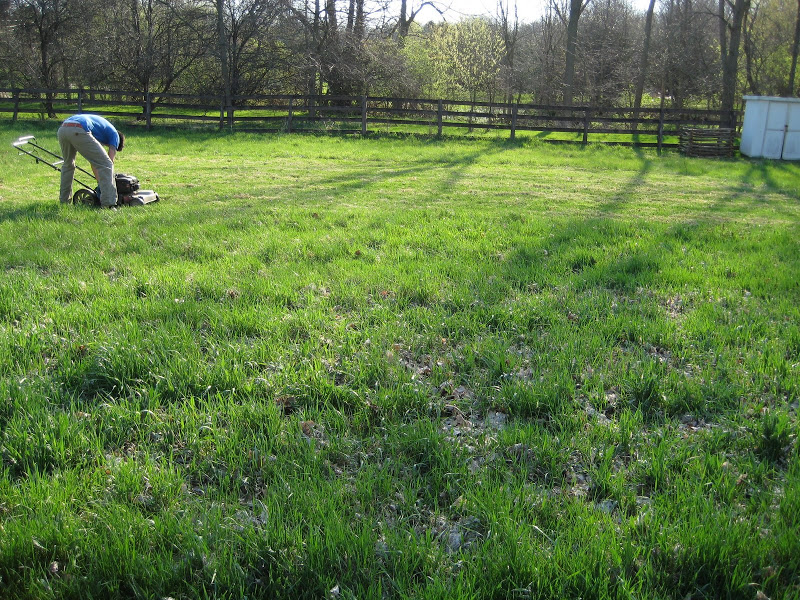
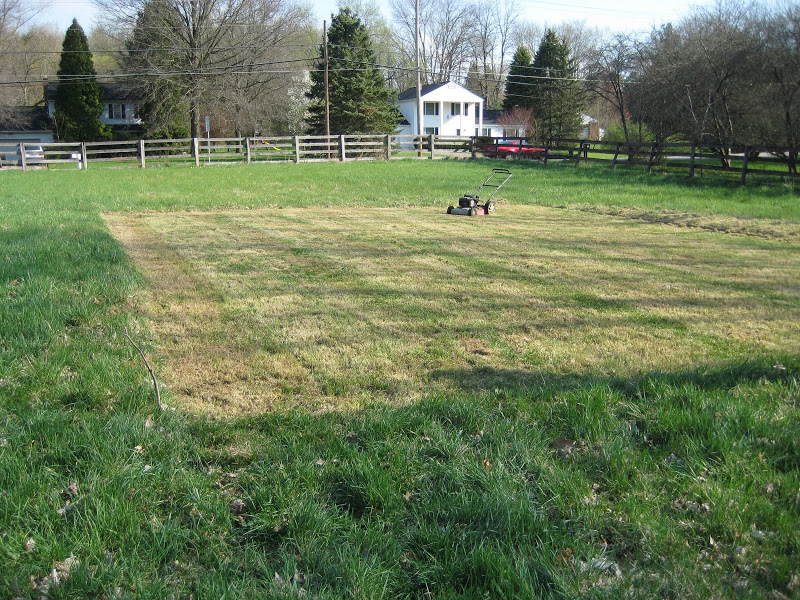
Here is the plot after mowing, next step: plowing.
–c.

So far, the most labor intensive process of the garden has been preparing the garden plot. Between mowing, plowing, tilling, raking and weeding, the majority of our time and energy thus far has been spent getting the ground ready for planting.
We’re fortunate to have a big fenced in pasture right next to our house that has been nothing but grass since the dinosaurs, as Andrew likes to say. Originally it was a field for horses, but there hasn’t been any there for nearly 20 years. It gets full sun all day (except for one area that gets shade towards the end of the day from a huge tree in our backyard) and seems the perfect spot for the garden.
We started the plot by measuring out the plot then mowing it.


Here is the plot after mowing, next step: plowing.
–c.
